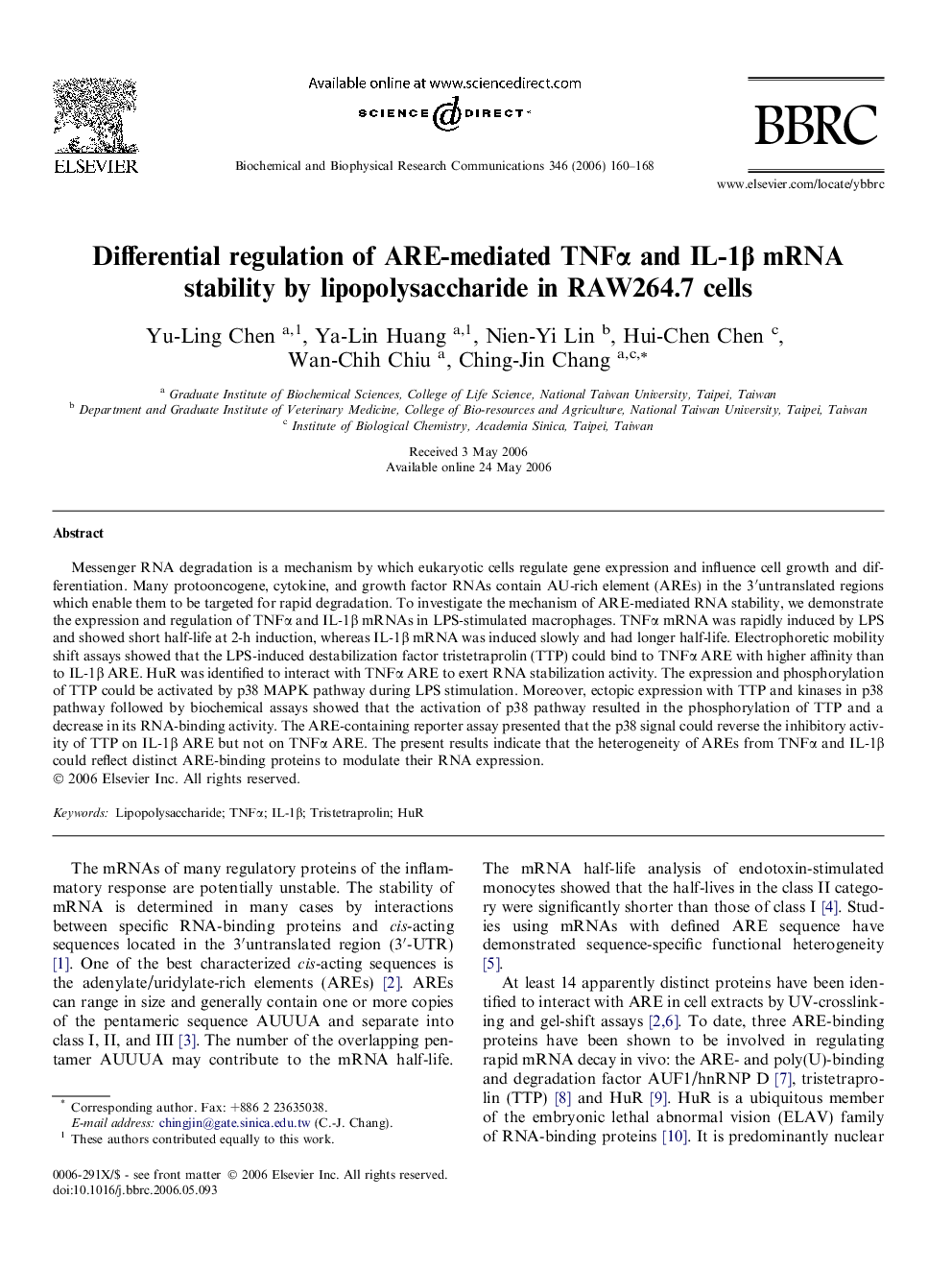| Article ID | Journal | Published Year | Pages | File Type |
|---|---|---|---|---|
| 1940127 | Biochemical and Biophysical Research Communications | 2006 | 9 Pages |
Messenger RNA degradation is a mechanism by which eukaryotic cells regulate gene expression and influence cell growth and differentiation. Many protooncogene, cytokine, and growth factor RNAs contain AU-rich element (AREs) in the 3′untranslated regions which enable them to be targeted for rapid degradation. To investigate the mechanism of ARE-mediated RNA stability, we demonstrate the expression and regulation of TNFα and IL-1β mRNAs in LPS-stimulated macrophages. TNFα mRNA was rapidly induced by LPS and showed short half-life at 2-h induction, whereas IL-1β mRNA was induced slowly and had longer half-life. Electrophoretic mobility shift assays showed that the LPS-induced destabilization factor tristetraprolin (TTP) could bind to TNFα ARE with higher affinity than to IL-1β ARE. HuR was identified to interact with TNFα ARE to exert RNA stabilization activity. The expression and phosphorylation of TTP could be activated by p38 MAPK pathway during LPS stimulation. Moreover, ectopic expression with TTP and kinases in p38 pathway followed by biochemical assays showed that the activation of p38 pathway resulted in the phosphorylation of TTP and a decrease in its RNA-binding activity. The ARE-containing reporter assay presented that the p38 signal could reverse the inhibitory activity of TTP on IL-1β ARE but not on TNFα ARE. The present results indicate that the heterogeneity of AREs from TNFα and IL-1β could reflect distinct ARE-binding proteins to modulate their RNA expression.
